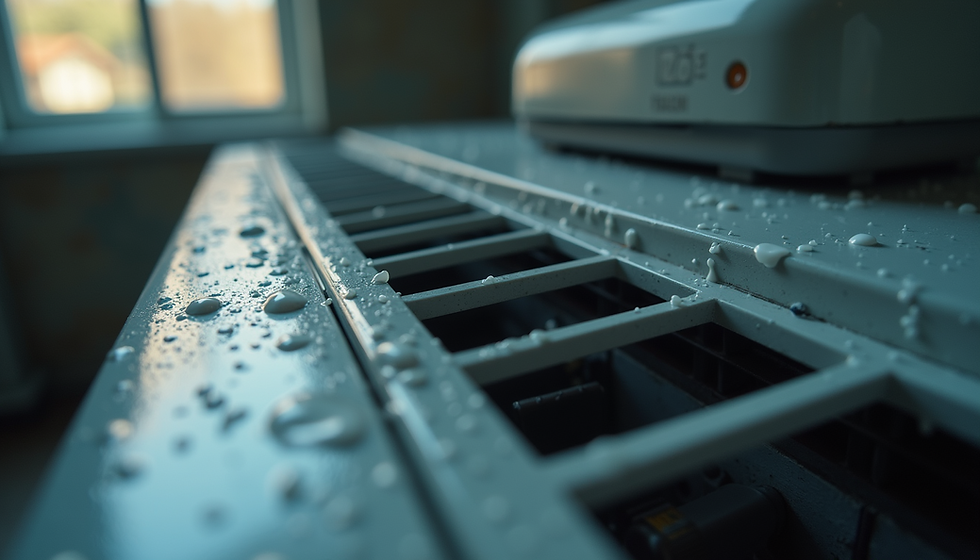Maximize Your AC Efficiency: Tips for Homeowners
- Mohan Raj

- Sep 4
- 4 min read
Updated: Sep 17
Understanding Your AC Unit
Before exploring settings and strategies, it's important to understand how your air conditioning unit works. Most residential AC systems cool your home by removing heat from the indoor air and transferring it outside. This process requires energy, which is why choosing energy-efficient settings is vital for saving on your utility bills.
Optimal Temperature Settings
One of the easiest ways to save energy is by adjusting your thermostat effectively. The U.S. Department of Energy suggests keeping your thermostat at 78°F (26°C) when you are home and awake. Not only does this temperature provide comfort, but it can also reduce your energy use by 3%-5% for each degree higher you set the thermostat.
If you find it too warm, try layering your clothing instead of lowering the thermostat. This small shift can lead to substantial savings on your energy bills.
Programmable Thermostats
A programmable thermostat can greatly enhance your energy savings. These devices allow you to set different temperatures for various times of the day. For instance, you can program your AC to run at 82°F while you’re away and cool down to 75°F just before you return home. This helps prevent unnecessary energy waste, potentially saving you 10% on your energy bills.
Use Ceiling Fans Wisely
Ceiling fans can effectively complement your air conditioning system by circulating cool air throughout your home. When used together with AC, you can set the thermostat a few degrees higher without sacrificing comfort. To maximize cooling, ensure that your ceiling fan is set to rotate counterclockwise in the summer. This simple action can create a refreshing breeze that makes it feel up to 4°F cooler.
Regular Maintenance
Keeping your AC unit in good shape is essential for optimal performance. Regularly checking or replacing the air filters can improve airflow and efficiency by as much as 15%. It's wise to schedule annual professional maintenance, which can help identify and resolve potential issues before they turn into expensive repairs.
Seal and Insulate Your Home
A well-insulated home can greatly reduce the workload on your air conditioning system. Inspect your windows and doors for gaps, and use weather stripping or caulk to seal any leaks. Proper insulation in your attic, walls, and even ducts can help maintain a stable indoor temperature, which can lower cooling needs by 20%-30%.
Close Blinds and Curtains
During the hottest parts of the day, closing your blinds and curtains can block direct sunlight from entering your home. This small change can help keep your indoor spaces cooler and reduce the strain on your AC unit. Blackout curtains are particularly effective, minimizing heat gain and keeping your home comfortable.
Avoid Heat-Generating Activities
Certain daily activities can create excess heat, making your AC work harder. For example, using the oven can dramatically raise indoor temperatures. Instead, consider grilling outdoors or relying on a microwave. Also, turn off unnecessary lights, as incandescent bulbs give off heat and can increase cooling demands.
Frequently Asked Questions (FAQ)
What is the best temperature to set my AC for energy savings?
The best temperature is 78°F (26°C) while you are home. Adjusting the temperature higher when you are away can lead to even more savings.
How much can I save by using a programmable thermostat?
Using a programmable thermostat can allow you to save about 10% on your energy bills by automatically adjusting the temperature while you are away.
Should I turn off my AC when I leave the house?
If you will be gone for a long time, it is better to raise the thermostat setting instead of turning off the AC completely. This helps maintain a comfortable indoor temperature without straining the unit.
How often should I change my air filter?
Check your air filter monthly and replace it every 1-3 months, depending on how often you use your AC and the filter type.
Can ceiling fans help reduce my AC costs?
Yes, ceiling fans can circulate cool air, allowing you to set your thermostat a few degrees higher while still remaining comfortable.
Smart Strategies for Energy Savings
Setting your AC for maximum energy savings involves more than just adjusting the temperature. It requires a mix of smart habits and dedicated maintenance. By understanding how your system works and implementing these practical tips, you can create a comfortable home while keeping your energy bills manageable. Remember, even small changes can lead to significant savings over time.
The Importance of Community Engagement
As I navigate through these tips, I realize the value of sharing experiences. Engaging with others who are also looking to optimize their air conditioning can provide fresh insights and ideas. Whether through online forums or local community groups, exchanging knowledge can enhance our understanding of energy efficiency.
Conclusion
Stay cool and save energy! By following these strategies, you can enjoy a comfortable living space without the burden of high energy costs. Embrace these tips and share your journey with others. Together, we can create a community focused on sustainable living practices.



